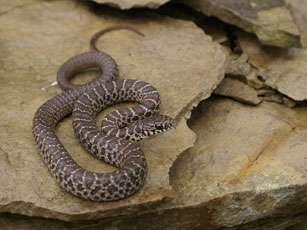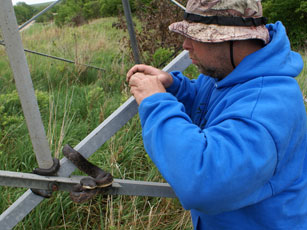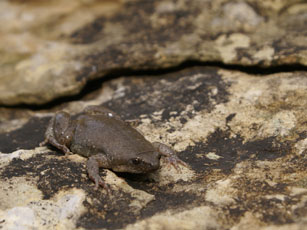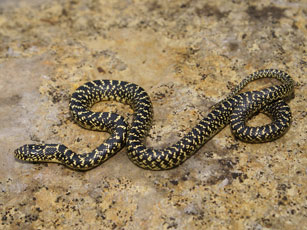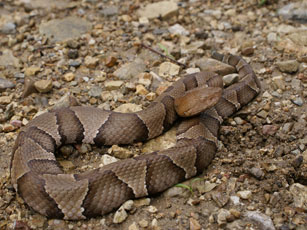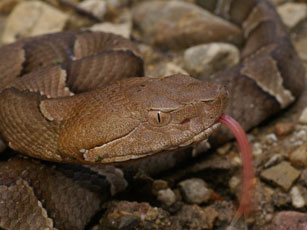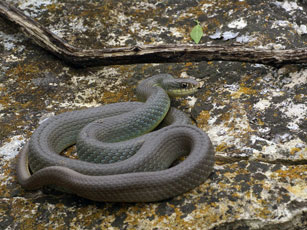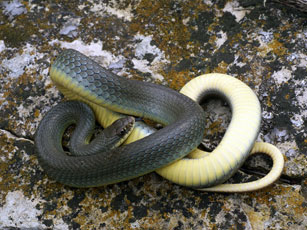
5-12-14
Trip Details
Location: Wabaunsee County Kansas
Weather: Cloudy, misty rain. 55 degrees.
Time: Noon
Herpers: Jeff LeClere, Jim Scharosch
Account by: Jim Scharosch
Photos by: Jim Scharosch
We headed west to the Flint Hills in Wabaunsee county Kansas. This was an area that I have been visiting for many years, in fact it was the first place I had ever herped in Kansas. The weather had changed dramatically. The high temperature for the day was 74, which was reached at midnight. The temps fell steadily after that. So after two days of sun and heat, it was rainy, windy and cold. It poured rain as we were driving out. Luckily it let up about thirty minutes after we arrived and only the occasional misty rain fell as we worked the rocks in the area.
Our first stop set the tone for the day as we turned many nice rocks for only a few animals. First was a Great Plains Skink (Eumeces obsoletus).
It was a large adult about ten inches in total length. It wasn't the first we had seen on the trip, but things were moving slowly enough that I stopped to take a photo.
Next up was a juvenile Racer (Coluber constrictor).
It still had the all of the patterning of a baby, but showed a bit of the bluish tint that will replace the dark pattern as it grows.
We moved on to flip a couple of pieces of tin that were the first things I ever flipped in Kansas all those years ago. These tins have produced a lot of animals over the years, including a cat one time! This time they concealed a nice Black Ratsnake (Elaphe obsoleta).
We moved on to another spot I have been visiting for a long time and
Our first find at this location was a Great Plains Narrow-mouthed Toad (Gastrophryne olivacea).
Next, Jeff found a last year's hatch Speckled Kingsnake (Lampropeltis getulus).
A little later we turned the "copperhead rock" and found, yes, a Copperhead (Agkistrodon contortrix).
It was a small adult, approximately twenty inches in length. It still had a hint of the green coloration at the tip of the tail that juveniles are born with. It was a fairly dark specimen.
After turning another zillion or so rocks I found an adult racer.
It was about two and a half feet long. It had the yellow coloration on the belly that is typical of the racers in the area.
That was it for the day. We turned a lot of rocks for those few animals. It looks like the weather in Kansas is going to bite us on the butt for this entire trip.


